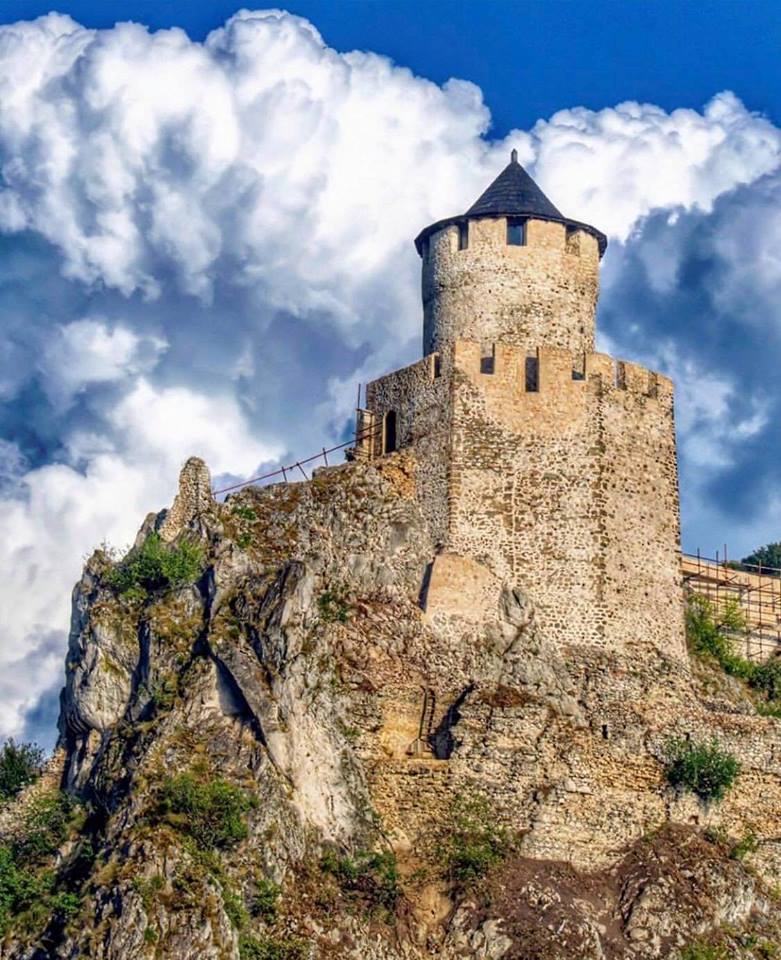On the walls of the magnificent Golubac fortress the “košava” wind breaks the waves of the Danube where the river is possibly most powerful, just before entering the largest gorge in Europe between the mighty Carpathian mountains
Like a sad, lonely Byzantine princess, like an eternal vigilant guard by whom no one can slip into theDjerdap gorge, the famous Golubac fortress has been defying centuries.
Its founder remains unknown and one can guess it originates from the 14th century. It has always been of great significance so everyone wanted it.
Numerous conquerors walked in it considering it their own, but during centuries it only had one master, the Danube, the only one that knows all its secrets. We would like the Danube to tell us who built this perfect fortress on a cliff just by the road, and also which of the legends about its name is true.
One thing is certain, all stories about this fortress are sad, and the saddest one takes us back to the time when this part of Serbia was under the Ottoman rule.
A girl named Golubana was the most beautiful in the area. A word was spread about her beauty, and the story came to a cruel Turkish Pasha who fell in love with her. She refused his love. To get his vengeance, the Pasha tied the poor girl to a rock sticking out from the water in the middle of the river opposite the mighty fortress, where she died in pain watching the city that was later named after her.
The second legend tells the story about the city that was named after the Byzantine princess Jelena (Irene Kantakouzene), the wife of despot Djuradj Branković. She tried to drive away her loneliness and sorrow by keeping pigeons that would come and sit on her white hands and she would tell them the story about her sadness and far Byzantium she longed for, since she wasn’t popular among the Serbian people…
The actors of the third legend are wild pigeons that lived on the rocks surrounding the fortress, and after them, that have chosen this place to be their home, the fortress was named after.
And what stories about Golubac the history wrote?
It is supposed that this stone witness of numerous historic revolutions and battles, after Battle of Kosovo (1389) fell in the hands of the Ottoman Empire, and then Golubac was the matter of dispute between two great empires, the Austro-Hungarian and Ottoman Empires.
Golubac fortress has ten towers. The first and the true builder of this fortress gave it nine towers set in front, back and lower town, but Turks added another tower and strengthened the fortress with canon openings. All towers are built in a shape of a square except the donjon tower (the strongest tower of the fortress, the last stand of defense) that has a polygonal base, and the cylindrical top, thus the name “Šešir kula” (Hat Tower).
Not far from the fortress, a great settlement was created, also called Golubac and there was an old road leading to it, and going around the fortress. However, after the World War I, a new road was constructed passing through the very walls of the fortress, and nowadays a major roadway to Romania leads through the fortress.
So today passengers are left breathless when passing through an unusual tunnel above which the old fortress rises and their eyes seek the ending of the blue river Danube that here resembles the sea.
How to get to the Golubac fortress?
The fastest and the best way to get to Golubac is the highway Belgrade-Kladovo, also named Djerdap roadway. If you are coming from Belgrade, you need to cross 130 km. if coming from the direction of Niš, the best way to go is across Zaječar, Negotin and Kladovo.
From Belgrade there are frequent bus lines to Golubac, and from other cities in Serbia, if there’s no direct bus line, we recommend taking a bus to Kladovo or Donji Milanovac, and from there a local bus to Golubac.
However the best way to visit Golubac fortress is by boat, on the blue waves of the Danube. There are guided boat tours from Belgrade, but also there are numerous cruisers coming from Europe. [serbia.com]






Blogger Comment
Facebook Comment